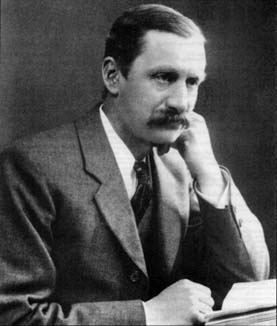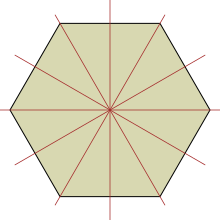
In mathematics, specifically group theory, given a prime number p, a p-group is a group in which the order of every element is a power of p. That is, for each element g of a p-group G, there exists a nonnegative integer n such that the product of pn copies of g, and not fewer, is equal to the identity element. The orders of different elements may be different powers of p.

In the mathematical field of group theory, Lagrange's theorem is a theorem that states that for any finite group G, the order of every subgroup of G divides the order of G. The theorem is named after Joseph-Louis Lagrange. The following variant states that for a subgroup of a finite group , not only is an integer, but its value is the index , defined as the number of left cosets of in .

In mathematics, a simple group is a nontrivial group whose only normal subgroups are the trivial group and the group itself. A group that is not simple can be broken into two smaller groups, namely a nontrivial normal subgroup and the corresponding quotient group. This process can be repeated, and for finite groups one eventually arrives at uniquely determined simple groups, by the Jordan–Hölder theorem.

In mathematics, specifically group theory, a nilpotent groupG is a group that has an upper central series that terminates with G. Equivalently, it has a central series of finite length or its lower central series terminates with {1}.

In group theory, the wreath product is a special combination of two groups based on the semidirect product. It is formed by the action of one group on many copies of another group, somewhat analogous to exponentiation. Wreath products are used in the classification of permutation groups and also provide a way of constructing interesting examples of groups.
In mathematics, the Abel–Ruffini theorem states that there is no solution in radicals to general polynomial equations of degree five or higher with arbitrary coefficients. Here, general means that the coefficients of the equation are viewed and manipulated as indeterminates.
In algebra and number theory, Wilson's theorem states that a natural number n > 1 is a prime number if and only if the product of all the positive integers less than n is one less than a multiple of n. That is, the factorial satisfies
In mathematics, specifically group theory, the index of a subgroup H in a group G is the number of left cosets of H in G, or equivalently, the number of right cosets of H in G. The index is denoted or or . Because G is the disjoint union of the left cosets and because each left coset has the same size as H, the index is related to the orders of the two groups by the formula

Ferdinand Georg Frobenius was a German mathematician, best known for his contributions to the theory of elliptic functions, differential equations, number theory, and to group theory. He is known for the famous determinantal identities, known as Frobenius–Stickelberger formulae, governing elliptic functions, and for developing the theory of biquadratic forms. He was also the first to introduce the notion of rational approximations of functions, and gave the first full proof for the Cayley–Hamilton theorem. He also lent his name to certain differential-geometric objects in modern mathematical physics, known as Frobenius manifolds.
In mathematics, the Feit–Thompson theorem, or odd order theorem, states that every finite group of odd order is solvable. It was proved by Walter Feit and John Griggs Thompson.

In mathematics, a Frobenius group is a transitive permutation group on a finite set, such that no non-trivial element fixes more than one point and some non-trivial element fixes a point. They are named after F. G. Frobenius.

In mathematics, specifically group theory, a Hall subgroup of a finite group G is a subgroup whose order is coprime to its index. They were introduced by the group theorist Philip Hall.

In mathematics, Burnside's theorem in group theory states that if G is a finite group of order where p and q are prime numbers, and a and b are non-negative integers, then G is solvable. Hence each non-Abelian finite simple group has order divisible by at least three distinct primes.

In mathematics, specifically group theory, Cauchy's theorem states that if G is a finite group and p is a prime number dividing the order of G, then G contains an element of order p. That is, there is x in G such that p is the smallest positive integer with xp = e, where e is the identity element of G. It is named after Augustin-Louis Cauchy, who discovered it in 1845.
In algebraic number theory, a reflection theorem or Spiegelungssatz is one of a collection of theorems linking the sizes of different ideal class groups, or the sizes of different isotypic components of a class group. The original example is due to Ernst Eduard Kummer, who showed that the class number of the cyclotomic field , with p a prime number, will be divisible by p if the class number of the maximal real subfield is. Another example is due to Scholz. A simplified version of his theorem states that if 3 divides the class number of a real quadratic field , then 3 also divides the class number of the imaginary quadratic field .
In group theory, a branch of mathematics, Frattini's argument is an important lemma in the structure theory of finite groups. It is named after Giovanni Frattini, who used it in a paper from 1885 when defining the Frattini subgroup of a group. The argument was taken by Frattini, as he himself admits, from a paper of Alfredo Capelli dated 1884.
The Schur–Zassenhaus theorem is a theorem in group theory which states that if is a finite group, and is a normal subgroup whose order is coprime to the order of the quotient group , then is a semidirect product of and . An alternative statement of the theorem is that any normal Hall subgroup of a finite group has a complement in . Moreover if either or is solvable then the Schur–Zassenhaus theorem also states that all complements of in are conjugate. The assumption that either or is solvable can be dropped as it is always satisfied, but all known proofs of this require the use of the much harder Feit–Thompson theorem.
In mathematics, George Glauberman's Z* theorem is stated as follows:
Z* theorem: Let G be a finite group, with O(G) being its maximal normal subgroup of odd order. If T is a Sylow 2-subgroup of G containing an involution not conjugate in G to any other element of T, then the involution lies in Z*(G), which is the inverse image in G of the center of G/O(G).
In mathematics, or more specifically group theory, the omega and agemo subgroups described the so-called "power structure" of a finite p-group. They were introduced in where they were used to describe a class of finite p-groups whose structure was sufficiently similar to that of finite abelian p-groups, the so-called, regular p-groups. The relationship between power and commutator structure forms a central theme in the modern study of p-groups, as exemplified in the work on uniformly powerful p-groups.
In abstract algebra, the focal subgroup theorem describes the fusion of elements in a Sylow subgroup of a finite group. The focal subgroup theorem was introduced in and is the "first major application of the transfer" according to. The focal subgroup theorem relates the ideas of transfer and fusion such as described by Otto Grün in. Various applications of these ideas include local criteria for p-nilpotence and various non-simplicity criteria focussing on showing that a finite group has a normal subgroup of index p.








































